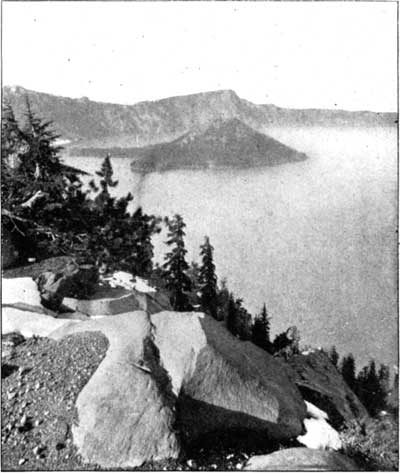Geological History of Crater Lake
A feature that is particularly impressive to the geologist making a trip around the lake on the rim crest is the general occurrence of polished and striated rocks, in place on the very brow of the cliff overlooking the lake.

The best displays are along the crest for 3 miles northwest of Victor Rock (fig. 10), but they occur also on the slopes of Llao Rock, Roundtop, Kerr Notch, and Eagle Crags, thus completing the circuit of the lake. On the adjacent slope toward the lake the same rocks present rough fractured surfaces, showing no striae. The glaciation of the rim is a feature of its outer slope only, but, as shown in figure 10, it reaches up to the very crest. The glaciers armed with stones in their lower parts, that striated the crown of the rim, must have come down from above, and it is evident that the topographic conditions of to-day afford no such source of supply. The formation of glaciers requires an elevation extending above the snow line to afford a gathering ground for the snow that it may accumulate, and under the influence of gravity descend to develop glaciers lower down on the mountain slopes. During the glacial period Crater Lake did not exist. Its site must then have been occupied by a mountain to furnish the conditions necessary for the extensive glaciation of the rim, and the magnitude of the glacial phenomena indicates that the peak was a large one, rivaling, apparently, the highest peaks of the range.

